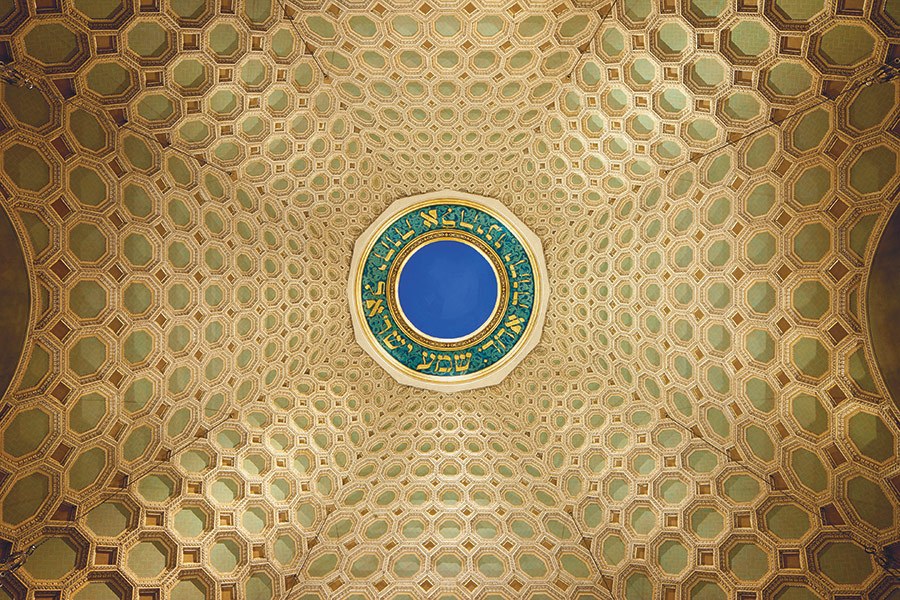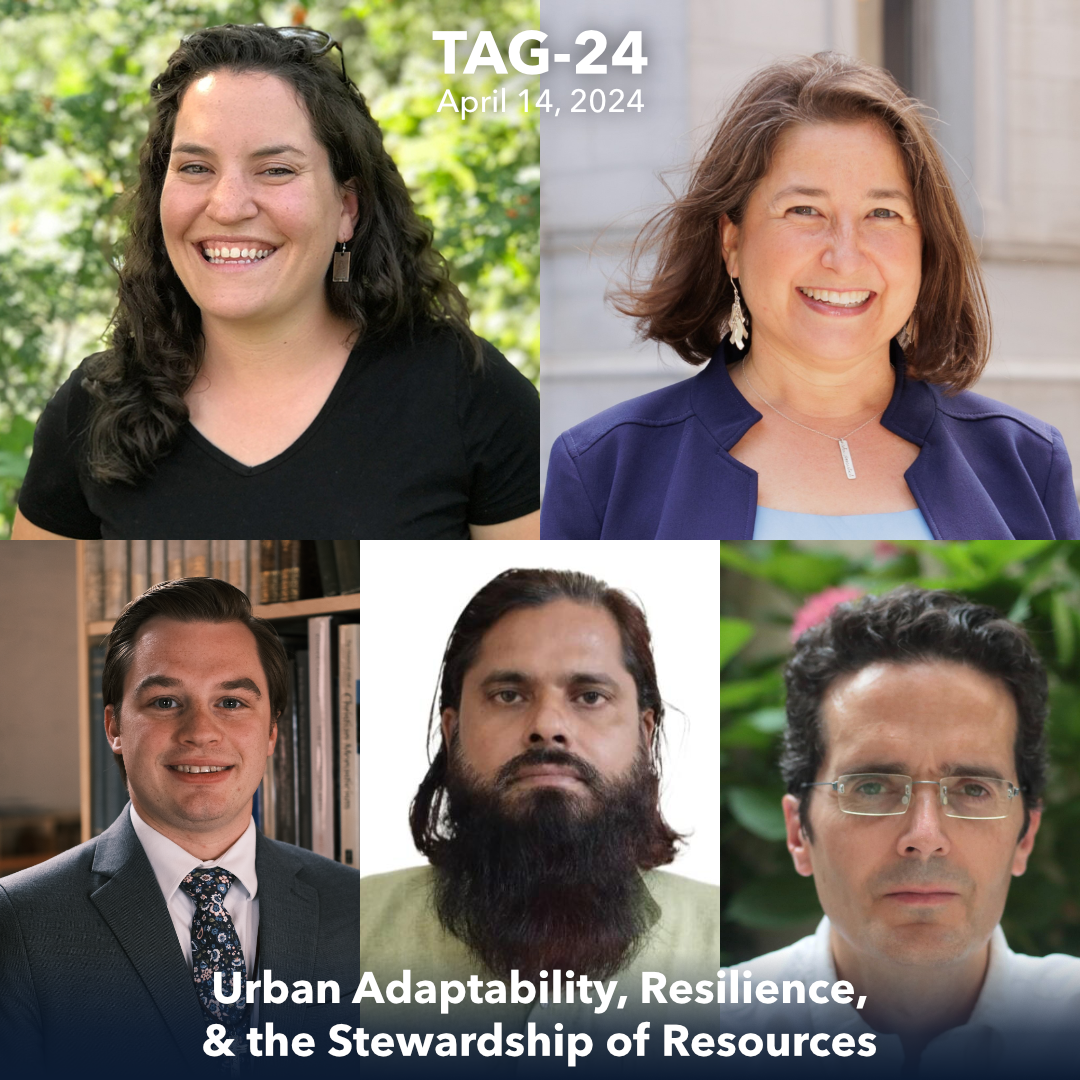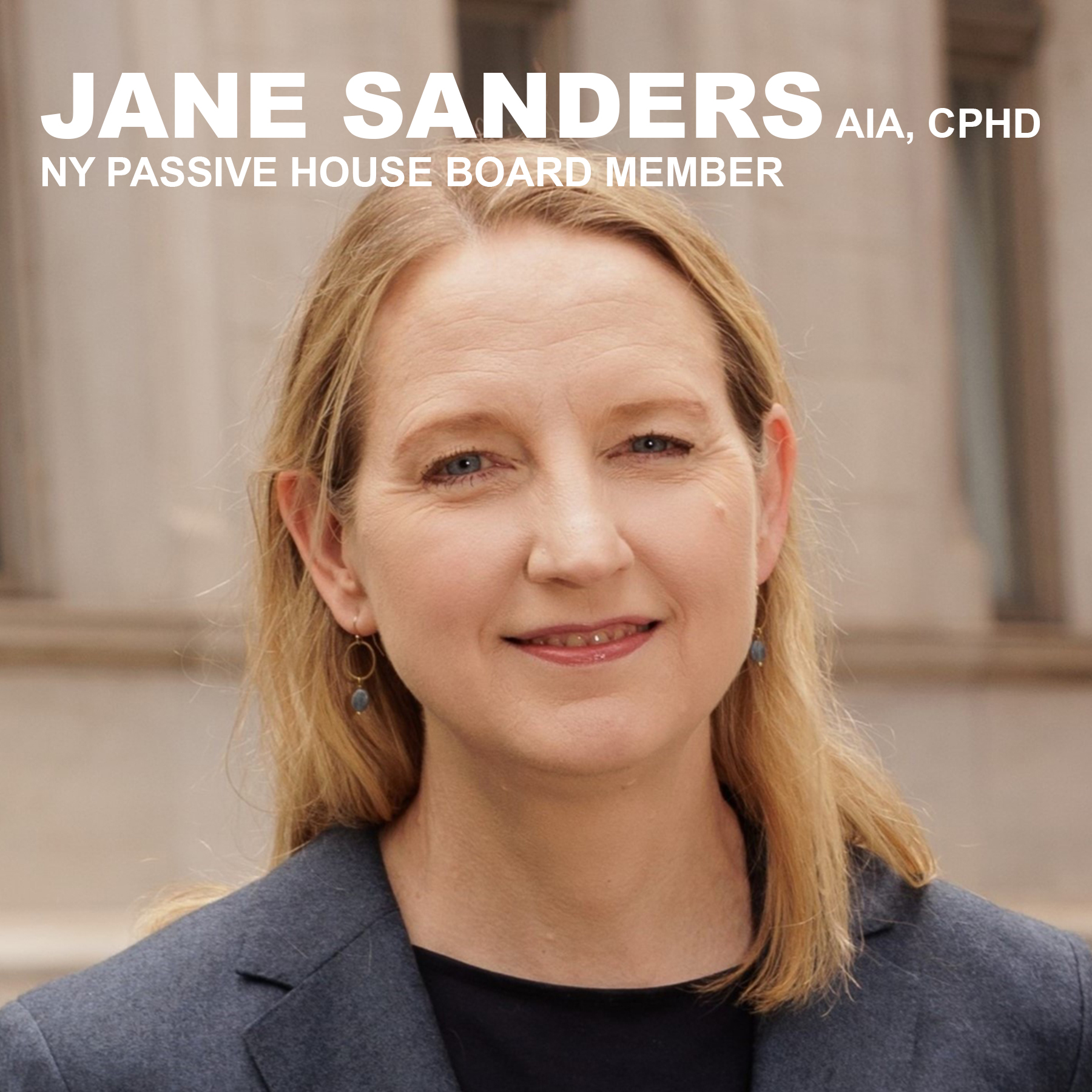Sam Lubell reports for The Architect’s Newspaper.
[Tom Bonner]
No architect in LA has mended more of the city’s historic icons than Brenda Levin. Gems in her portfolio include the Griffith Observatory, City Hall, the Wiltern Theater, the Bradbury Building, Frank Lloyd Wright’s Hollyhock House, and Dodger Stadium, to name just a few.
And still none seem quite as spectacular as the newly-renovated Wilshire Boulevard Temple. After a two-year renovation, the ornate Byzantine/Moorish/Romanesque synagogue in the city’s mid-Wilshire district sparkles.
Built in 1929, the temple had never had a renovation. When much of its congregation moved to a new facility on the city’s west side in 1988 the deterioration progressed faster. Many wanted to stop investing in the temple altogether, but luckily the synagogue’s Senior Rabbi, Steven Leder, pushed hard for a new campus plan that included fixing up their original house of worship. In 2009, Levin and Associates, with a team that included Matt Construction, began the process, with construction beginning in 2011. The synagogue is still undergoing a capital campaign, which has thus far raised $123 million, to pay for the $50 million renovation and the larger master plan.
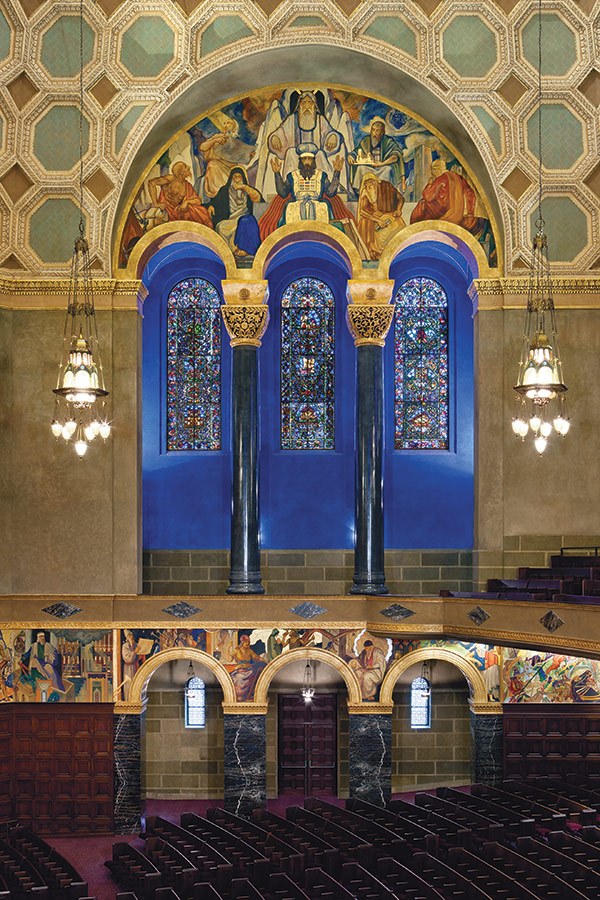 |
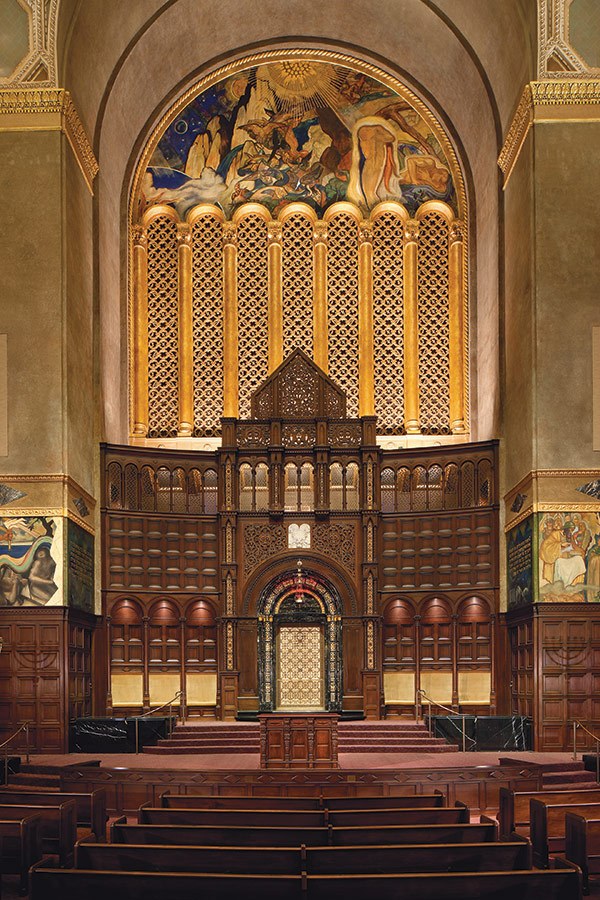 |
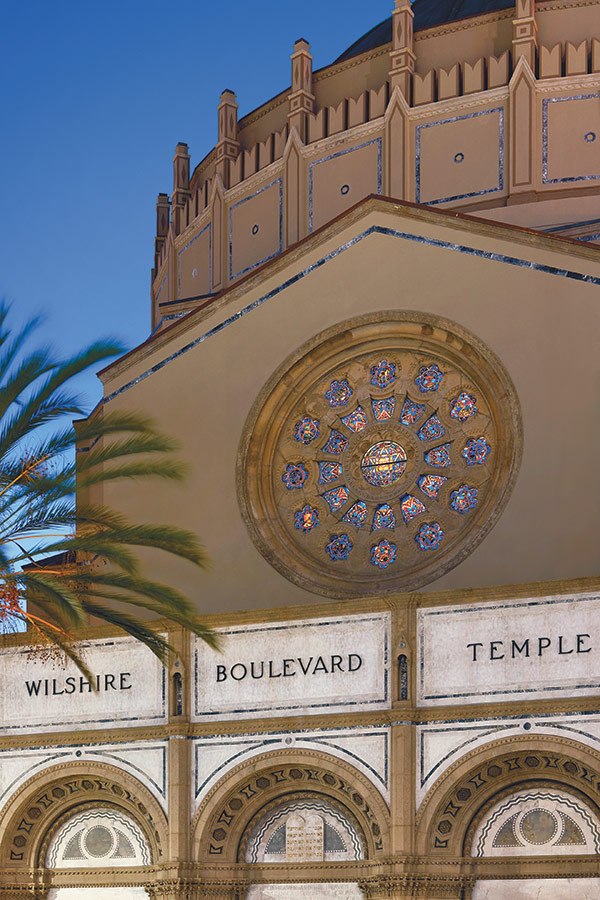 |
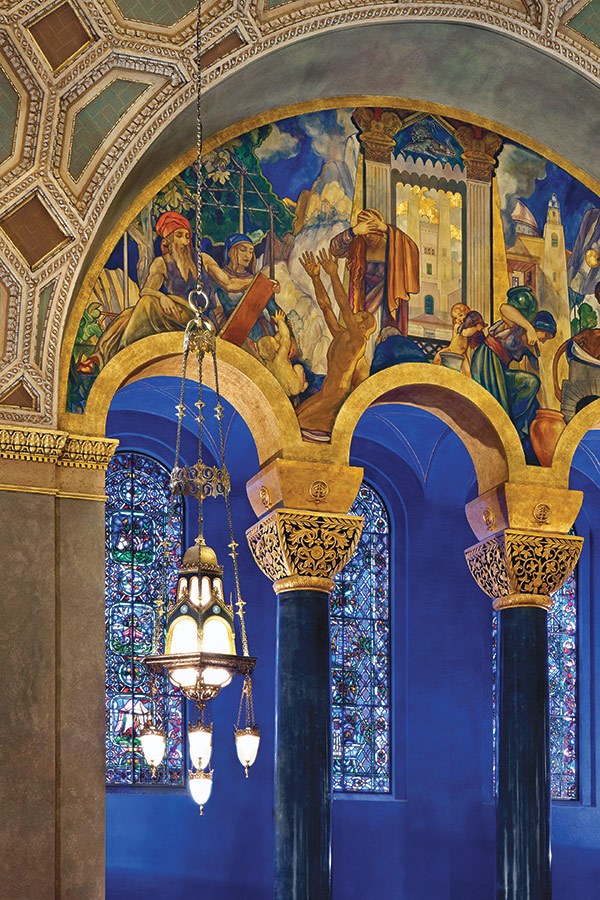 |
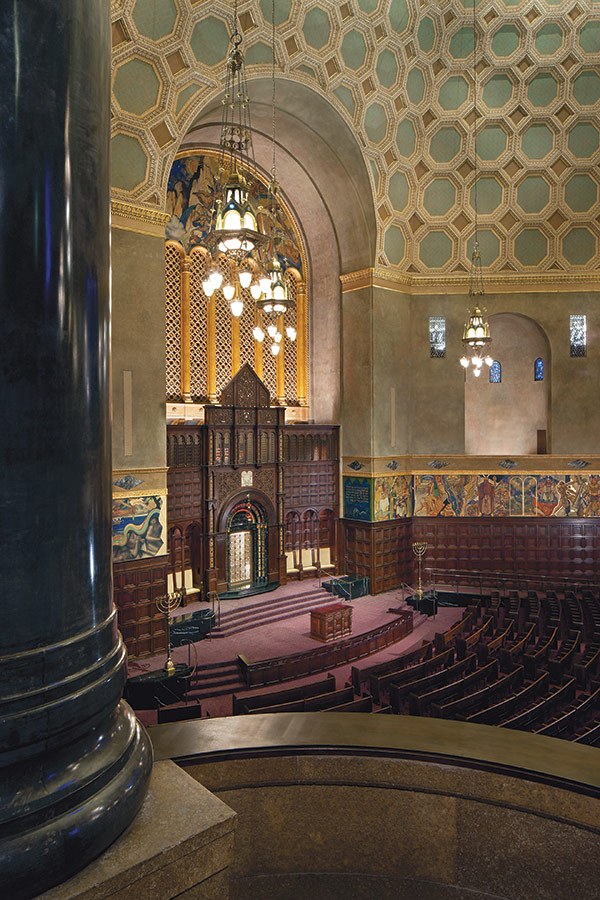 |
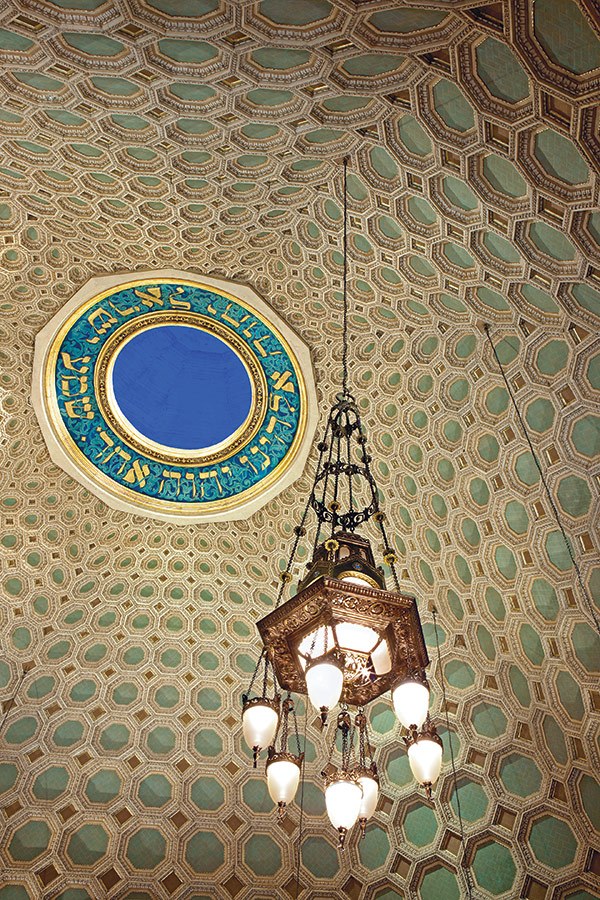 |
“A lot of people think a renovation means a new coat of paint,” said Levin. Oh how wrong they are. Basically every surface in the temple was touched, she added. Detailing everything that was fixed up is like reciting a laundry list, so it’s best to observe what needed the most work.
That includes the building’s suspect sheer walls, its interior plaster, its giant and spectacular coffered dome, its rose window, and its sanctuary murals by famous Hollywood artist Hugo Ballin. The interior dome’s plaster surrounds were either cleaned or replicated, then repainted, while the building’s copper outer dome was repaired. The stained glass inside the stone rosary window was removed, taken apart, cleaned, repaired, and re-leaded. The murals were painstakingly touched up, with new paint made slightly lighter to differentiate it from original work. On the building’s exterior, marble bands, which had calcified, were repaired and honed, while the marble base was replaced. Detailed cast stone and concrete was repaired and reinforced. Carbon fiber helps support the sheer walls, the columns, and the roof.
 |
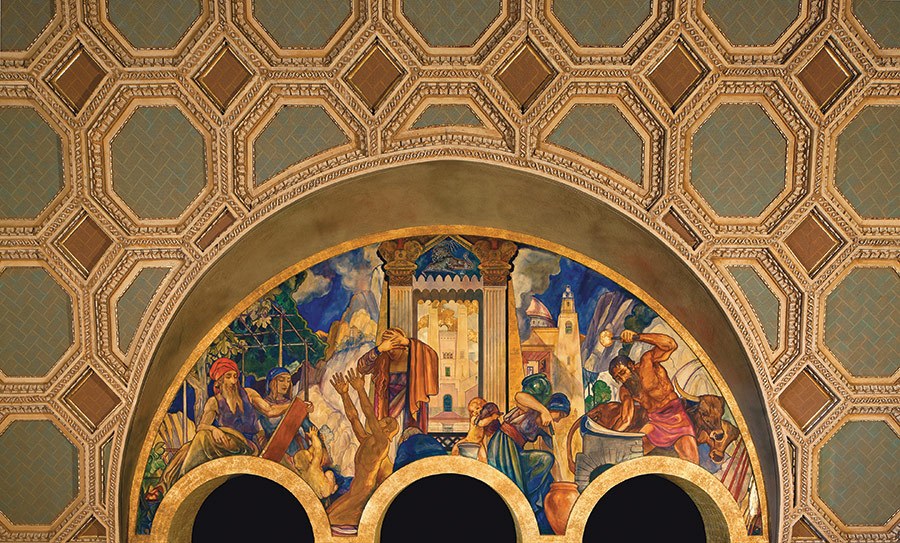 |
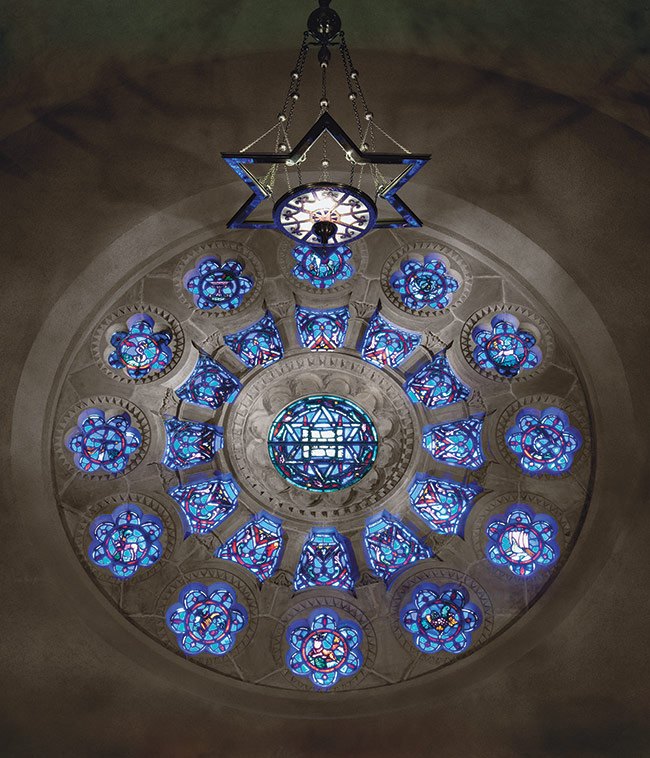 |
Over the course of the project the giant sanctuary was filled with a ten-story scaffold, which Levin recalls standing on top of to make sure that colors and paint were just right. “There’s never just one color,” she said. “It’s always five layers mashed together.”
In addition to all the fixes, a few new elements were added, such as improved lighting and audio, located behind new grills that were designed to blend with the historic interior. New air conditioning was installed. The temple’s bimah was lowered and extended by two feet, and a new courtyard was added to the east, where there was once a no-man’s land of mechanical equipment and parking. Many more changes are in store: Levin is leading a master plan that will include two new schools, a new banquet facility, still more public spaces, and the restoration of much of the synagogue’s existing facilities.
“It’s the best room in Los Angeles,” said Levin. “It’s so welcoming and theatrical.” And thanks to her work and the perseverance of a Rabbi, what was once crumbling is now majestic.

